Over the last few years I have been interested in this type of construction. I have been involved in a few earth building activities. I attended a long weekend bioconstruction course in Santiago Del Estero in the north of Argentina, I helped a German lady build the walls of her bathroom in Cordoba and was part of a team that built a mud oven at our venue in Buenos Aires. I can’t quite put my finger (or my foot) on exactly what it is, but there is something about using the earth beneath our feet to build stuff that excites me!
When I was on the board of trustees in my final year of high school I remember a throw away line that one of the older board members said. We were discussing the school mission statement and one of the ladies as a joke said, ‘To make the best with what we’ve got’. I have a horrible memory and can’t even recall what I had for breakfast this morning but for some reason that line has stuck with me. Maybe that is why I am so interested in bioconstruction. That line literally sums up the essence of what it is. ‘making the best’ – building houses and structures that serve people, and ‘with what we’ve got’ – the natural resources that surround us.
The week I spent in the small village Lumbisi, Ecuador, has given me a deeper insight not only into the world of building with the natural elements, but also in how society, development, and/or evolution, has pushed these ancient building techniques into the background while ‘faster’ building methods have taken over.
In Ecuador up until the end of the 60’s, traditional building techniques where the majority. That was until the oil boom happened. Exploration for oil in the amazon had been happening throughout the 60’s but in the early 70’s oil prices skyrocketed, so did Ecuadorian oil exploration. All of a sudden Ecuador became rich from oil and gas. What resulted from this sudden explosion in riches was that everybody began to build using this strong, reliable, easy to work with, fast to construct with, building material called concrete. If you lived in Ecuador at the time and you had the money, there was no reason for you not to build with concrete. It was an amazing building material that also gave you status if you built with it. It meant you had the money to do so.
From then on, if you built with the earth instead of concrete, you were seen as poor. This might be a strange concept to fathom but I have talked to a few people about it and it is literally the case. No Ecuadorian wanted to be seen as poor, and the more that people built with concrete blocks, the cheaper it became, so eventually everybody converted! It’s plain as day to see that around that time, construction with earth literally stopped in its tracks. Travelling around Ecuador, old mud brick buildings can be spotted amongst the masses of concrete constructions. All of which are at least fifty years old.
To begin with, excluding the not wanting to be seen as poor idea, I completely understand why someone would decide to build a house of bricks or concrete instead of earth. Building a house with earth takes longer and is more labour intensive than the most common modern method of a concrete base, with reinforced concrete columns, and walls built with concrete blocks or bricks. Also, when building with earth you have to take into consideration which walls are exposed to the elements and adjust your design accordingly. Concrete and bricks are weather durable, so you can put a wall up anywhere and give it a coat of paint without having to think too much about whether they are exposed or not.
The weeklong training was funded by the Erasmus + programme of the European Union, coordinated by the CCIVS ‘Coordinating Committee for International Voluntary Service’ and hosted by CCIVS members FEVI a foundation for education and international volunteering based in Ecuador. About one month ago, out of the blue, I was offered a place on the training by the Foundation that provides us with volunteers. It was probably the fastest ‘yes’ that had ever passes my lips. Before I knew it, I was on a plane heading for Ecuador!
After getting to know the stories of the people who attended the training it became a little more obvious why the particular attendees were chosen. Most attendees were coming from NGO’s (non-governmental organisations). All of whom were great potential capacity builders. Their positions in their respective organisations meant they were well placed to create positive change though bioconstruction. There was Munju from India who could use bioconstruction to build the public toilet blocks with his organisation, Sergey from the Ukraine who wants to build more housing in the ecovillage that he lives in on an island in Sweden, or Felip from Macedonia who runs a project that engages in activities for Muslim and Catholic youth to try and bridge the gap between the two religions in his country. I’m still not sure how I fit into that category but with a renewed enthusiasm for bioconstruction I’m going to do my best to make my attendance at the course worth the while of the organisations that made it possible!
The idea of the project was dreamt up many moons ago by CCIVS’s director Vicky. Her idea was to train and empower a group of international bioconstruction students so they could return to their respective countries and apply the skills and knowledge learnt. Each student is expected to carry out a bioconstruction project on their return to their country. This project will be guided by the tutor who directed the training. His name is Ariel, he is an engineer, university professor, and bioconstruction expert who works at the Technological University of Santa Fe, Argentina.
By lunch time on the first day of the training, I knew that if there ever existed a thing such at fate, then this point in time was the proof of it! A really interesting country, a beautiful bunch of people doing the training, an excellent crew of skilled and knowledgeable people running the course, an amazing host family, the potential to learn a whole heap about earth construction whilst doing it, and we all got sponsored to be there! I felt like Charlie when he found the golden ticket to enter the Chocolate factory!
It is undeniable the similarities between bioconstruction and baking! You have a range of ingredients which you mix together using different methods depending on the result that you want to get! Like baking, you mix the dry ingredients before you add the wet. In our case we mixed local clay heavy soil with sand, trialling various ratios before adding the water. You also have to sieve the dry ingredients to get rid of any clumps before adding water. In some mixtures we added straw and in others we didn’t even use water as the mixture was wet enough. It depended on what building technique we were going to use.
The thing about using natural resources is that every environment differs greatly, so depending on where you are, you will have different ingredients to work with. For example, in Lumbisi there are a lot of rocks, a good supply of bamboo, and the earth has a lot of clay in it. This means that the bioconstruction techniques that we used took advantage of those particular ingredients specific to the area. It’s the same with any traditional cultural dish. They all use local ingredients.
Just like any experienced baker, an experienced bio-builder gets to know the perfect ratio of ingredients by the way the mixture looks and feels. By the way, we also chewed on some dirt to get a gauge of the different soil textures! Any great baker knows when the mixture is too dry or too wet, or when it needs more of a certain ingredient. When bio baking (haha) you can’t just follow a recipe. The earth is made up of many different components: organic material (mainly decomposing plants), sand, silt, and clay. The soil in every location has a different ratio of those components. Depending on the amount of each component that that particular soil has, and what building technique you want to use, you will usually have to add more of one component to find the right mix. We had to add a lot of sand to the mixture. Sand is important because it works as a skeletal structure. Clay is important because it acts as the glue that holds everything together.
The most important element in the process is water. So, the building technique that you will use will also depend on your access to water. Water is the key, because without it you can’t build. When building you have to hydrate your mixture so that it becomes malleable enough to work with. Afterwards, you have to wait for the water to evaporate so your structure will harden and become strong. This stage is like the baking of the cake. If your ratios are correct, your structure will dry in the correct way as to not crack or fall apart. We have all seen cake disasters that have flopped or fallen apart during or after the baking process! The same thing can happen with your wall if you don’t get your ratios right!
The idea of bioconstruction is to use the least amount of energy possible in preparation for, during, and after the build. In doing so, your negative environmental impact is lessened. I say ‘lessened’ because it is impossible to build without having some negative impact on the environment. Local materials are the key to achieving that goal. You use less energy in transporting the materials, and it also saves you transport costs in the process! I’ll give you an example. If you want to build a house and there are no rocks in the area, you will probably have to put down a concrete slab. If there are a lot of rocks in the area you can you can use less concrete and more rocks in the base. Having to transport rocks a large distance uses a lot of energy in the process, not to mention the cost.
Note: concrete is used where necessary, and usually in the base. It makes sense because you don’t want to be replacing your floor every year because it is made of earth. It is also a very strong material, so the energy used to make it is worth while because it will last you a very long time! Concrete is avoided as much as possible in the construction process because it is extremely energy intensive to make. Concrete production also equates to 5% of all manmade CO2 emissions.
There were a few benefits of building with earth that were pushed into the background when the concrete block took over. It’s cheap, because you can use the earth that is all around you. It’s insulation properties are hugely different to concrete blocks or bricks. In the cold, it keeps you warm, and in the heat, it keeps you cool. It also maintains a constant humidity of around 50%, which is a healthy level for a house’s inhabitants. When the air is humid, the walls absorb the water vapour, and when the air is dry, the walls give off moisture. The walls literally breath. Earth is also fireproof, non-toxic, durable and biodegradable.
The downsides are more like ‘opportunities’ to come up with a better design for your house. You have to think about protecting the walls from water. As they say in bioconstruction: boots and hat. You need to protect the walls from moisture that comes up from the ground and down from the sky. Your boots are good waterproof footings for your walls. Your hat is a good roof. The easiest way to protect your walls from rain is to have a roof that has large eaves or a good overhang!
I attended this training with a few unanswered questions about the practicalities of applying earth building construction methods. Many of those have been answered. I can see the benefits of bioconstruction in terms of environmental practices and human health, cost savings for low income families, employment opportunities and the creation of a skilled workforce, the connection between ancient building techniques and modern construction, and community growth opportunities (in New Zealand we used to call it a ‘Working B’. In Latin America they call it a ‘Minga’. They are common these days where people come from big distances to volunteer on a construction project whilst learning on the job. The traditional ‘Minga’ was a practice in the Andean highlands of Ecuador, Peru, Colombia and Bolivia for hundreds of years. It is a voluntary, collaborative effort in which townspeople of all ages and genders contribute with their work, their motivation, their knowledge or their wit to finish a project of collective interest.)
Not something that I learnt on the trip, but it is worth the mention. There are also unlimited learning experiences for children (the building of the mud oven with the kids was literally one of the most rewarding and educationally rich opportunities that I have experienced in my educational career). To this day we bake in the oven that the kids helped to build. I believe that that experience is a slow growing seed that will have a lasting impact on the kids. Not to mention myself and the other adults that participated in its construction.
So, what did we do on the course? Here are a few snaps to better demonstrate the process.
We visited some adobe build structures built 50/60/70 years ago. Below is the house of Manuel. They built this house as part of a MINGA 60 years ago. The host of the Minga provides all of the food, and in this instance all of the booze too.
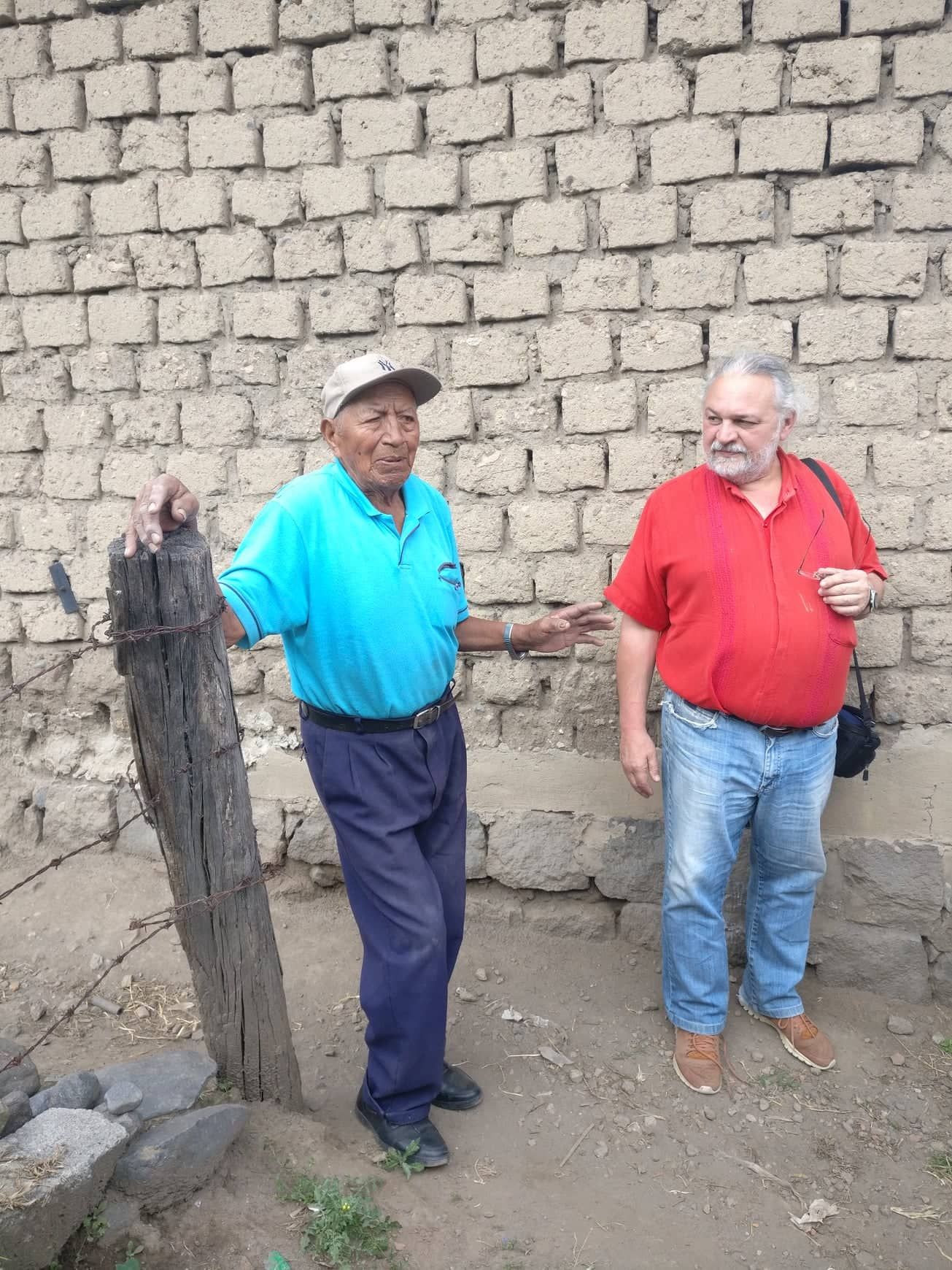




All of these old houses had a space in the roof for to store corn. They also didn't have chimineys as the smoke would protect the corn from a certain bug that likes corn. I imagine you would be eating smokey flavoured corn. I can't imagine that the constant smoke in the house would be too good for your health though! In the last photo you can see the importance of good boots for your house. When rain hits the ground is splashes up and eats away at a wall. Even though it's boots aren't that good, it's doing pretty well for a 60 year old building!


This is an 80 year old church. Still going strong! Here is the view from the bell tower of Lumbisi.
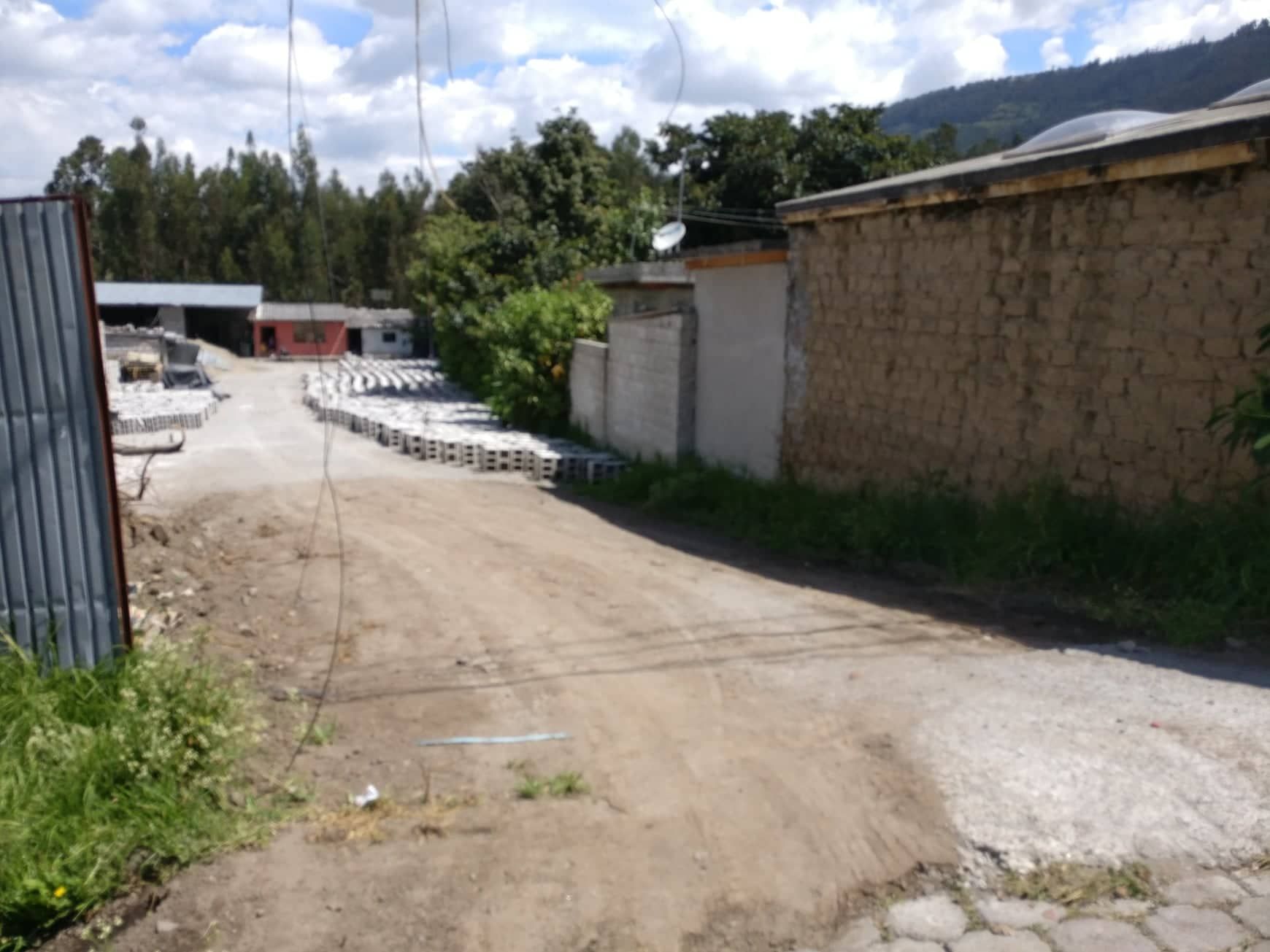
This photo depicts exactly the transition from old forms of construction to new...


More examples of houses built before the 70s. All of the mature ladies are dressed like that.
Here is where the old meets the new. this house was built using only recycled wood. The owner is a climbing guide. It shows by the bridges, wires, and big drops are designed into this house. I wouldn't say this house would be safe for babies!






In the last photo you can see that the owner has gone for style more than practicality in this build. Placing bricks on their end has no practical purpose in this construction. It makes the wall weaker and lessens insulation. Because of this aesthetic preference by the owner, wires were conected at the base and the ceiling running through the middle of the walls to give it strength. Ecuador is an earthquake prone zone so certain measures have to be taken in terms of protection to seismic activity. This house also had a grey water treatment system with fish. This house had an amazing feel to it. So much wood and light!
The last house and the follwing house were projects that a local engineer, Patricio was involved in. They were both in private communities with large fences and security guards. The way that the adobes are stacked like books is for aesthetic purposes only. The layers of abodes needed extra reinforcement to achieve this. It was a bueatiful house though!
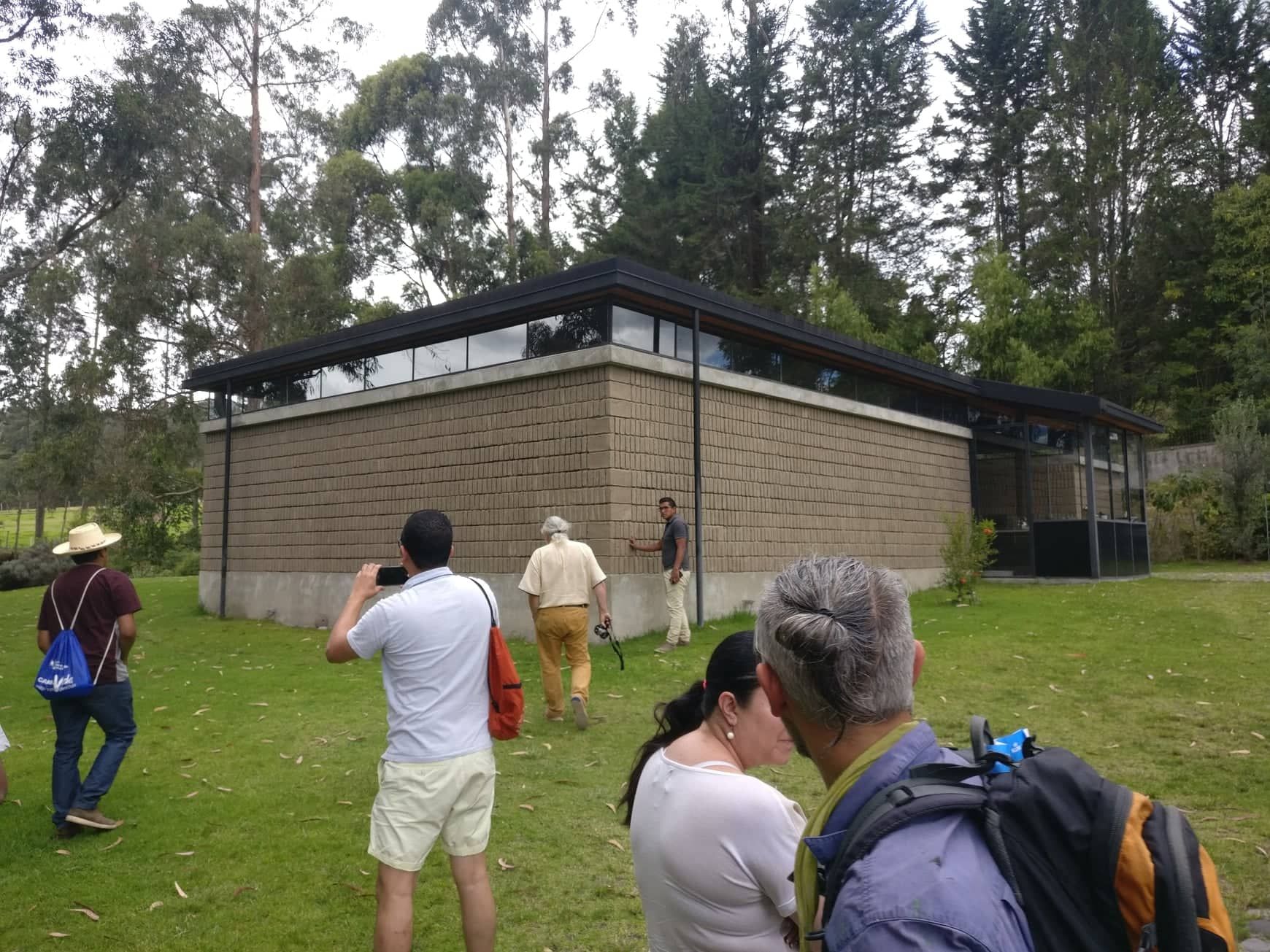


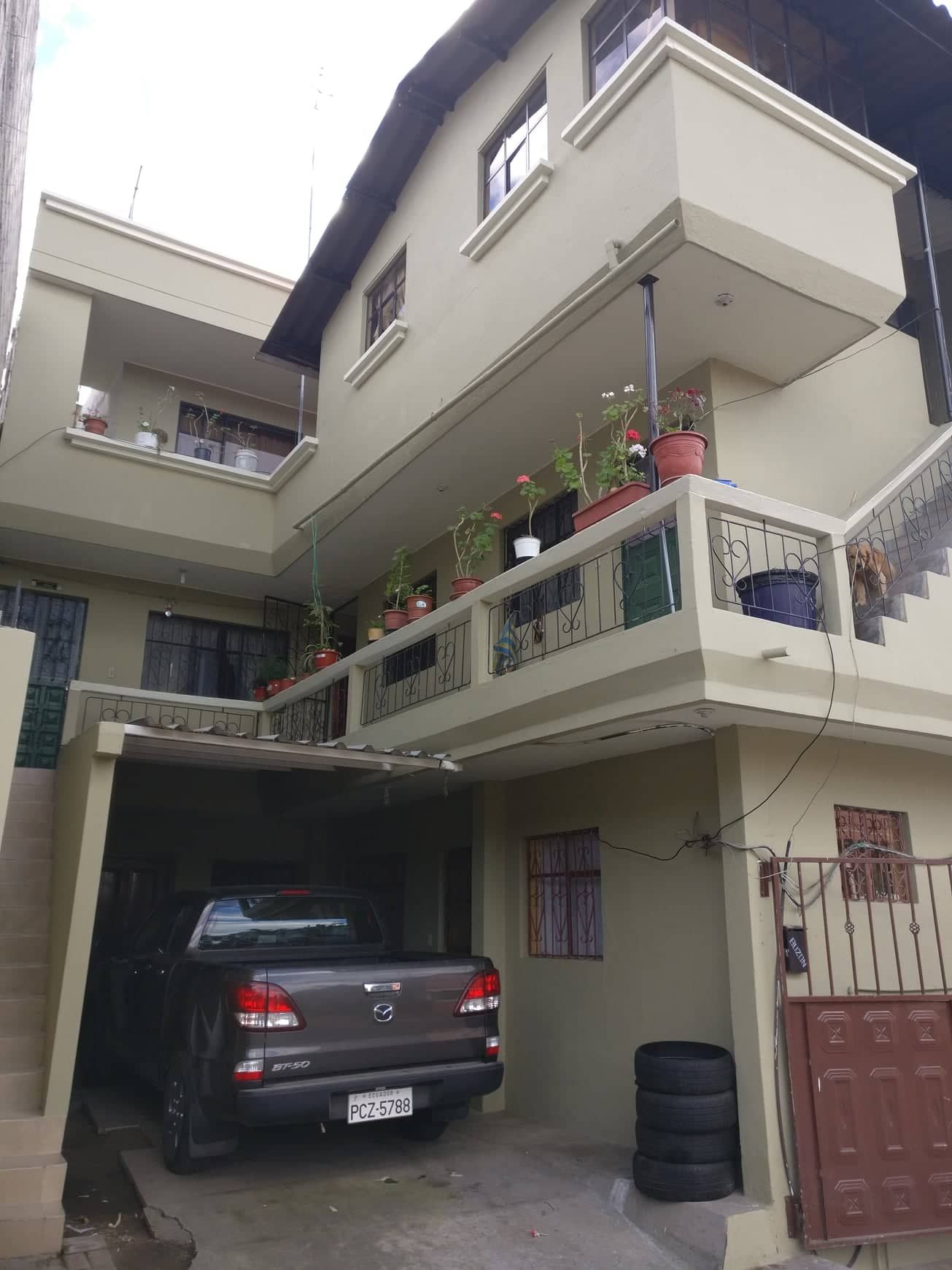 This is the house of the family that I stayed with. It's built with concrete blocks.
This is the house of the family that I stayed with. It's built with concrete blocks.
First things first. Do some investigations into the local materials that we will be using. What are their properties and how to they behave when you add water and afterwards when they dry.





Sift the dirt to get rid of the big clumps.




This was the test of states: solid, liquid, gas, and how the mixtures behaved with varying ingredient ratios in those states. I found this test very helpful later on when we needed to describe the texture that we needed for each technique.


This technique is called bahareque in Ecuador. It has a different name in each country. I don't know what it is called in english. We'll call it the 'stuffed wall' technique. Did you know that bamboo is one of the strongest natural building materials on planet? It's particularly good in earthquake prone zones as it is unbelievably strong yet flexible.





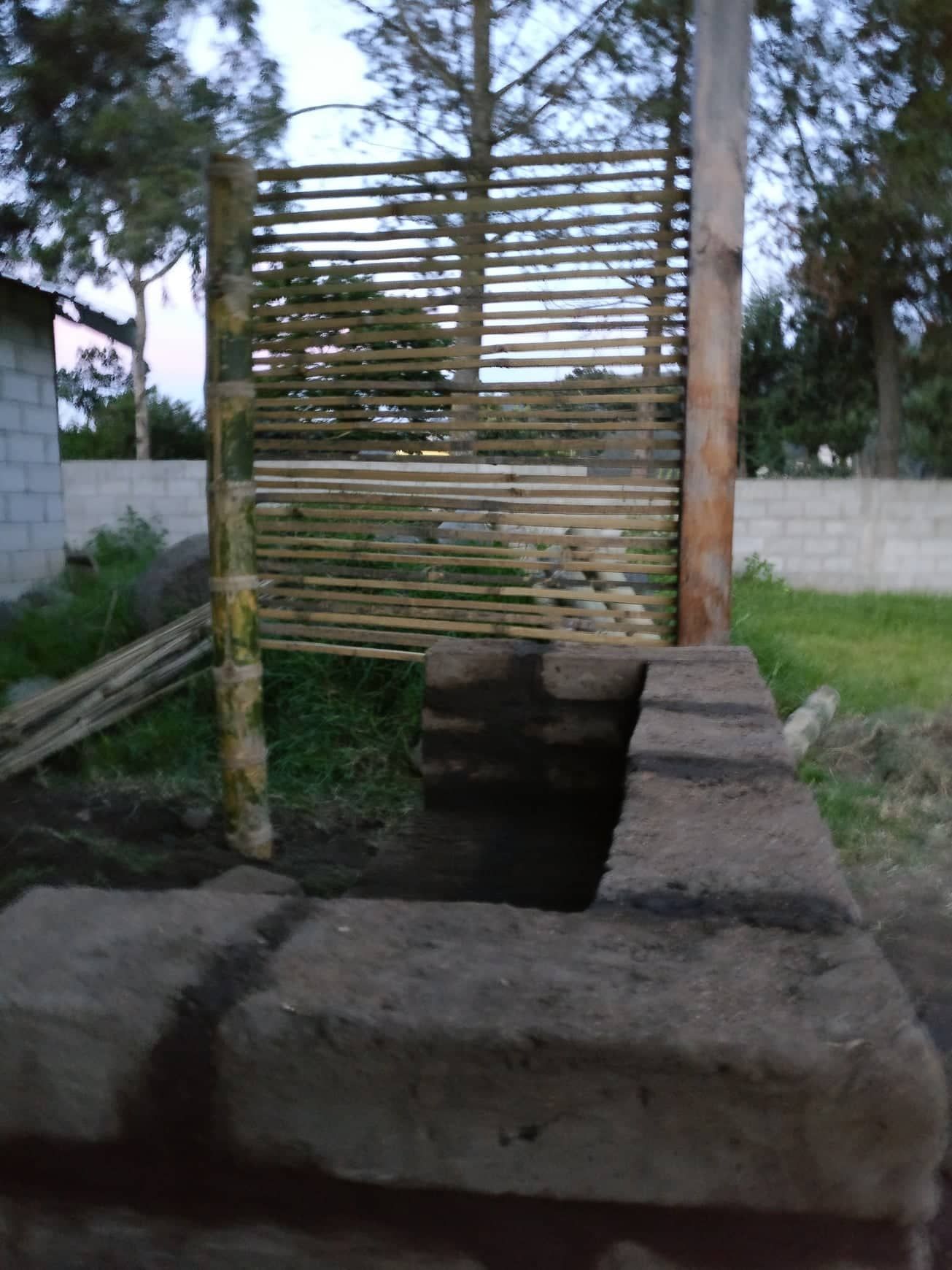


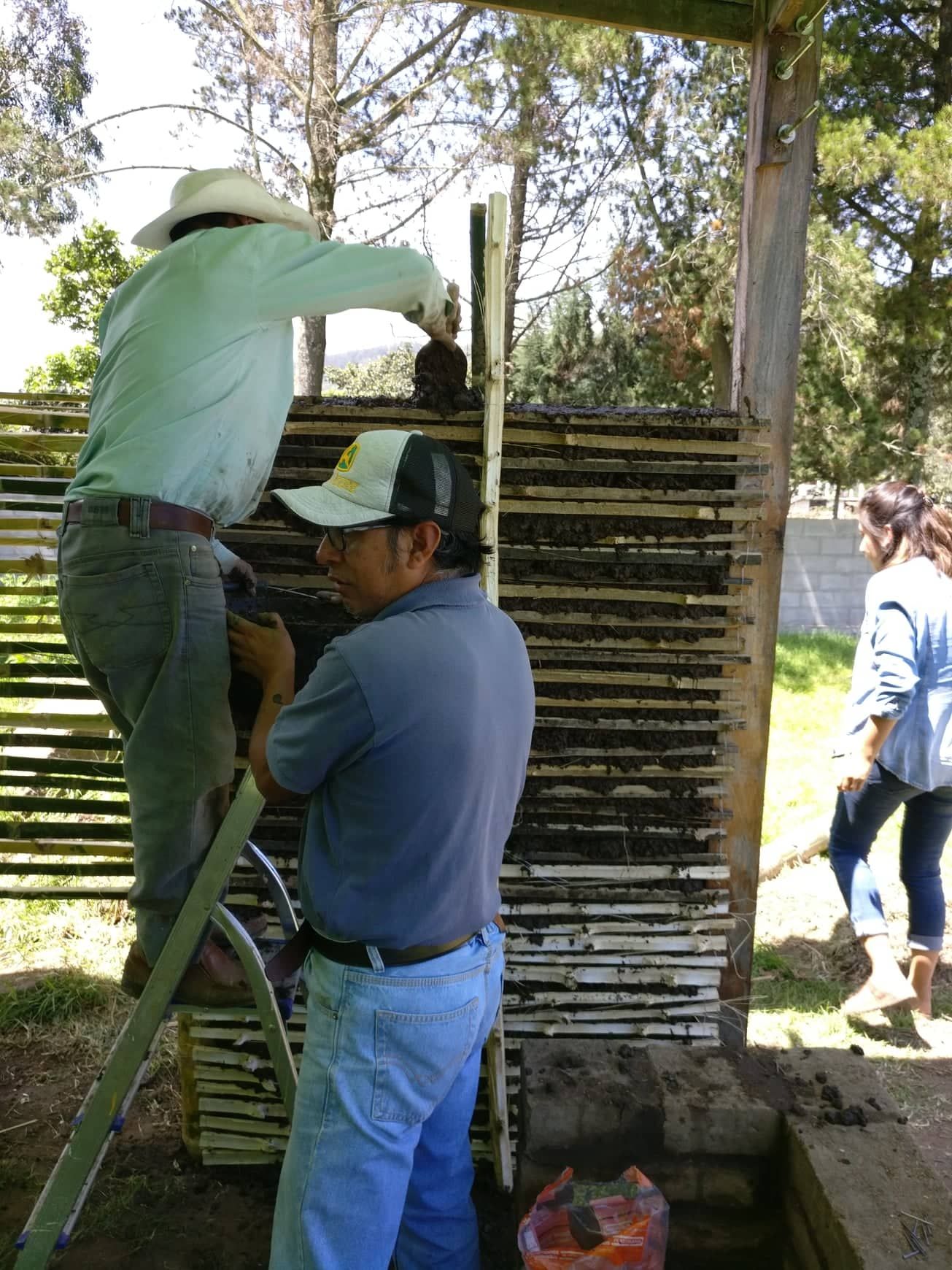
The first stuffing in the wall was a soil, sand and gravel mix. The mixture was almost identical to the concrete used to make the bases of houses, except it didn't have concrete. The second stuffing we uses was straw and a very liquidy mud. You use different stuffing for different thermal and sound insulations. The key to thermal insulation is air. The key to sound insulation is many fine layers.






At any stage you can add powdered paints to give colour.
Our team trip to Quito city. About half an hour from Lumbisi.



That is not an unusually large hand. It is an unusually large lemon! The tropical fruits are amazing. My favourite was granadilla, which is a type of passionfruit. Who knew there were different types of passionfruit!



Corn is the most common food around. They make everything you can imagine from it. They also find a million uses for platano which is like a big banana. My family own several plots of land which they grow most of their food on. They also sell a lot of their corn.


Meal time was fantastic. Always with rice and everyday a different tropical fruit juice.

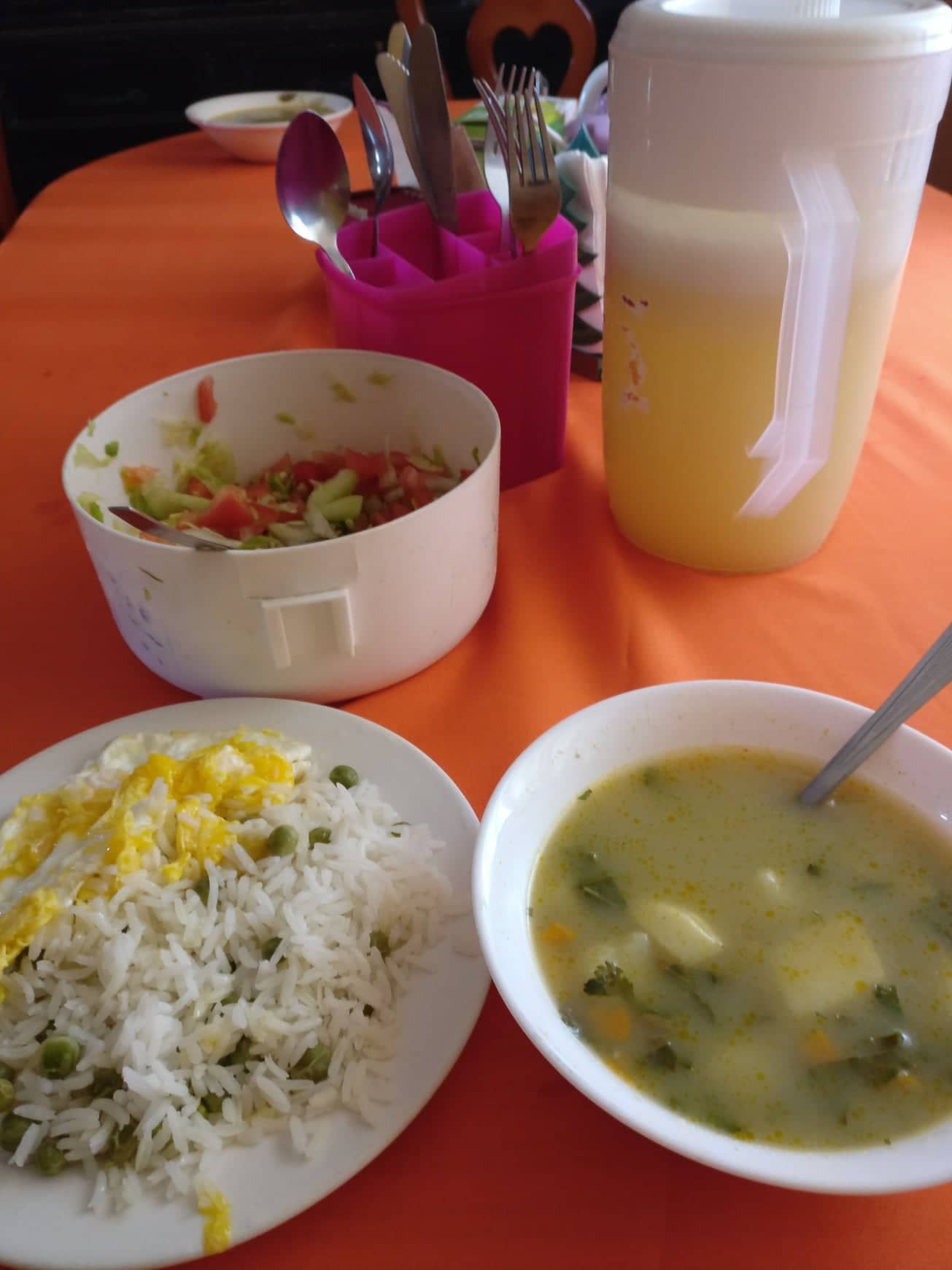
I hold a special place in my heart for my Ecuadorian mum Marianna. She was just a beautiful soul! Because her parents died when she was very young, she started working at the age of 9. She was teh centrepiece of the family. The only time she stopped working was to sit down and eat with me or the family. My heroine!

We worked a day in their garden plots.



This technique is called 'tapial' or 'rammed earth'. Most of the buildings in the historical centre of Quito were built by the Spanish using this technique.


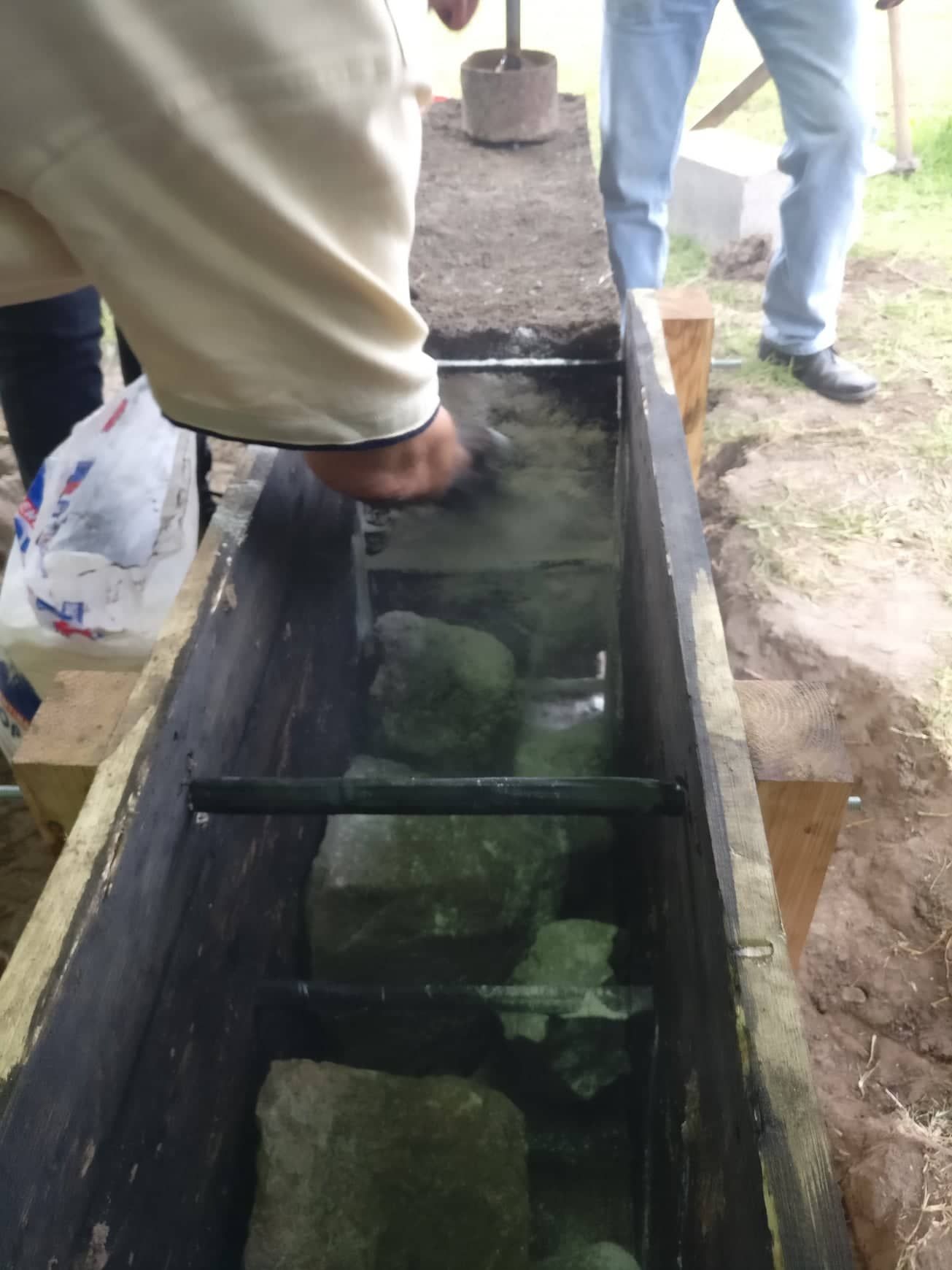

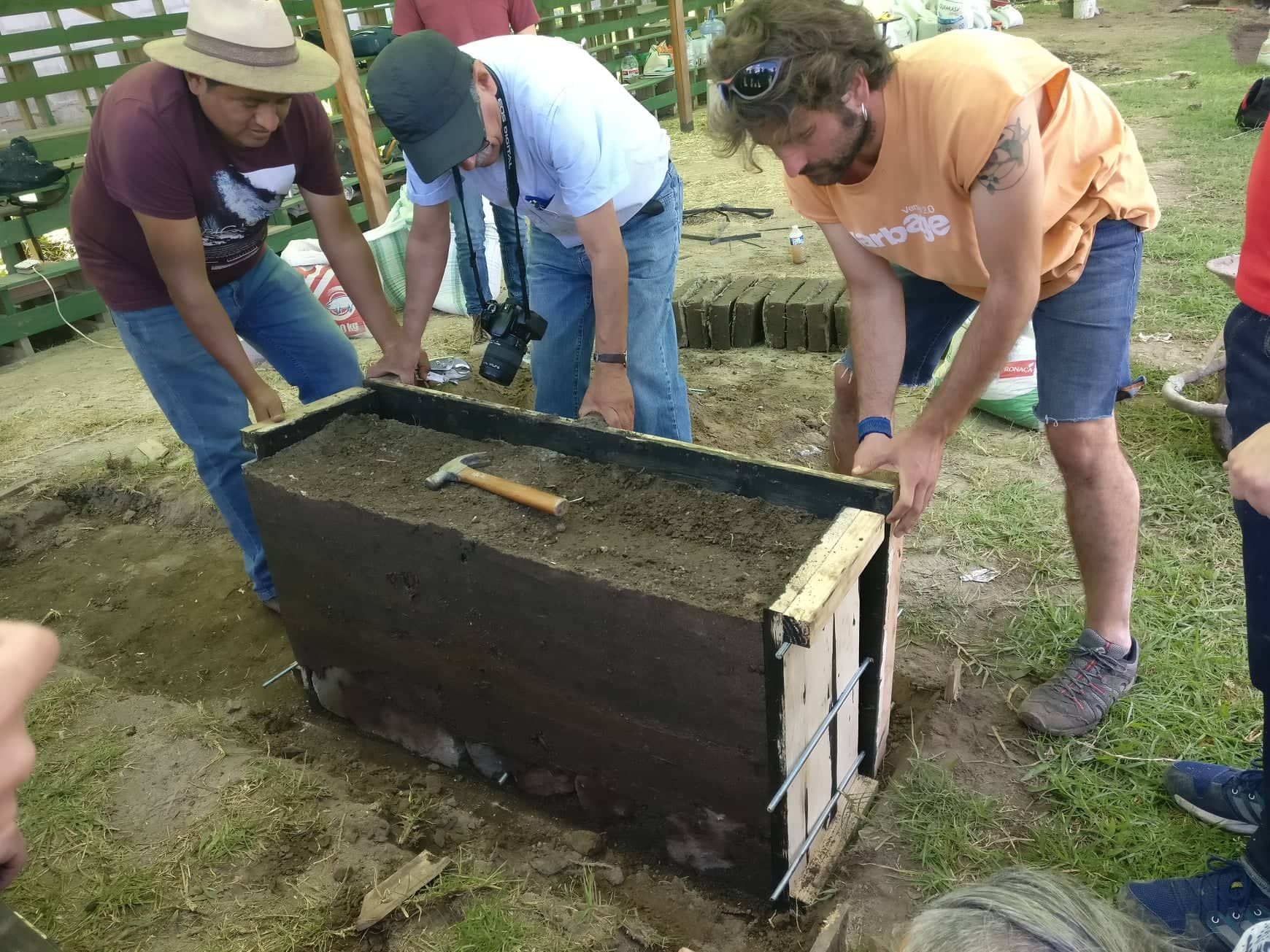




As you can see, we used rocks and adobes in this structure. A bit of colour too!


The bench we made from Adobes (mud bricks).










Here we tested different ratios of sand to soil for the plastering layer that we were going to use on our bench.


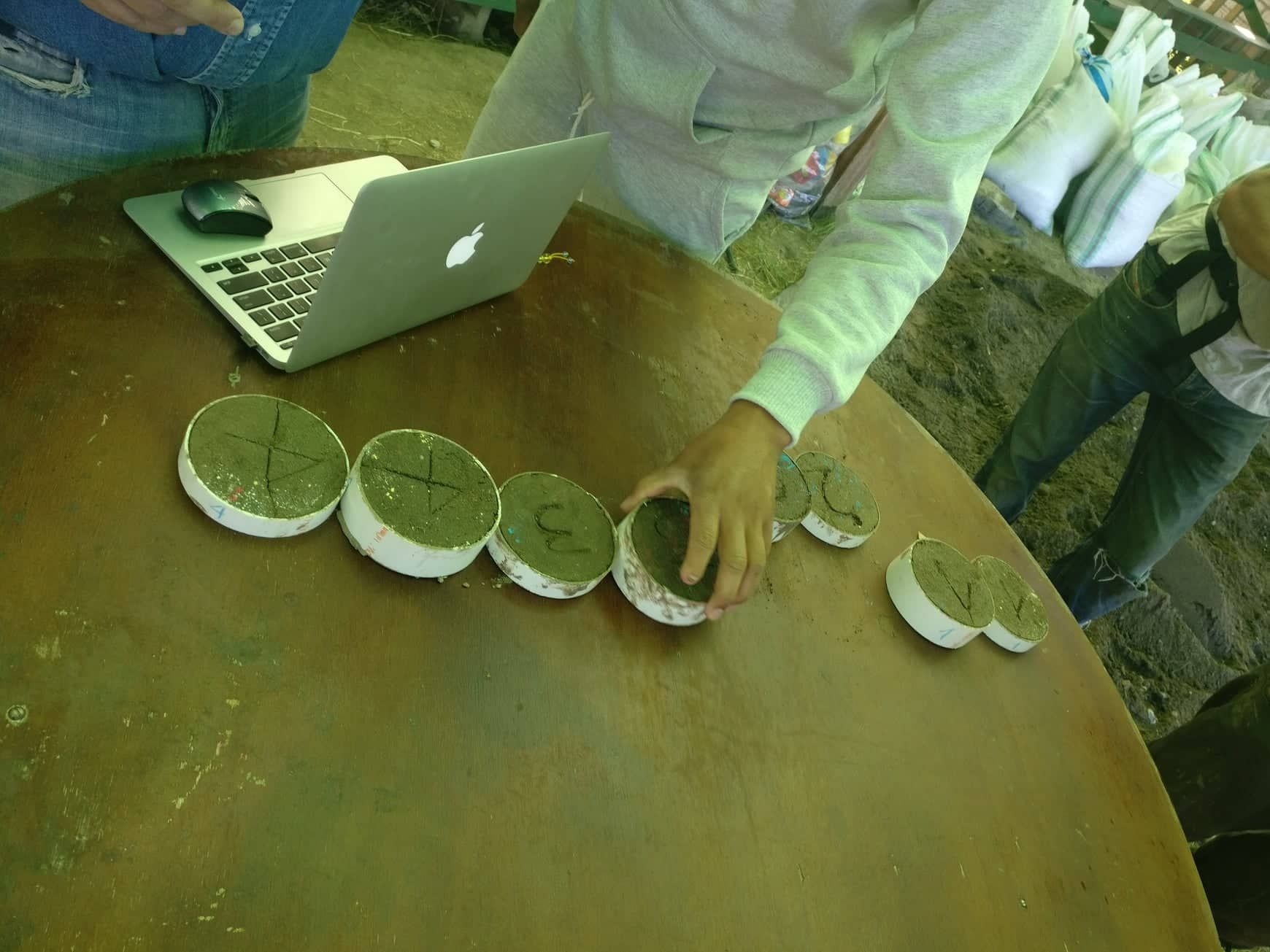

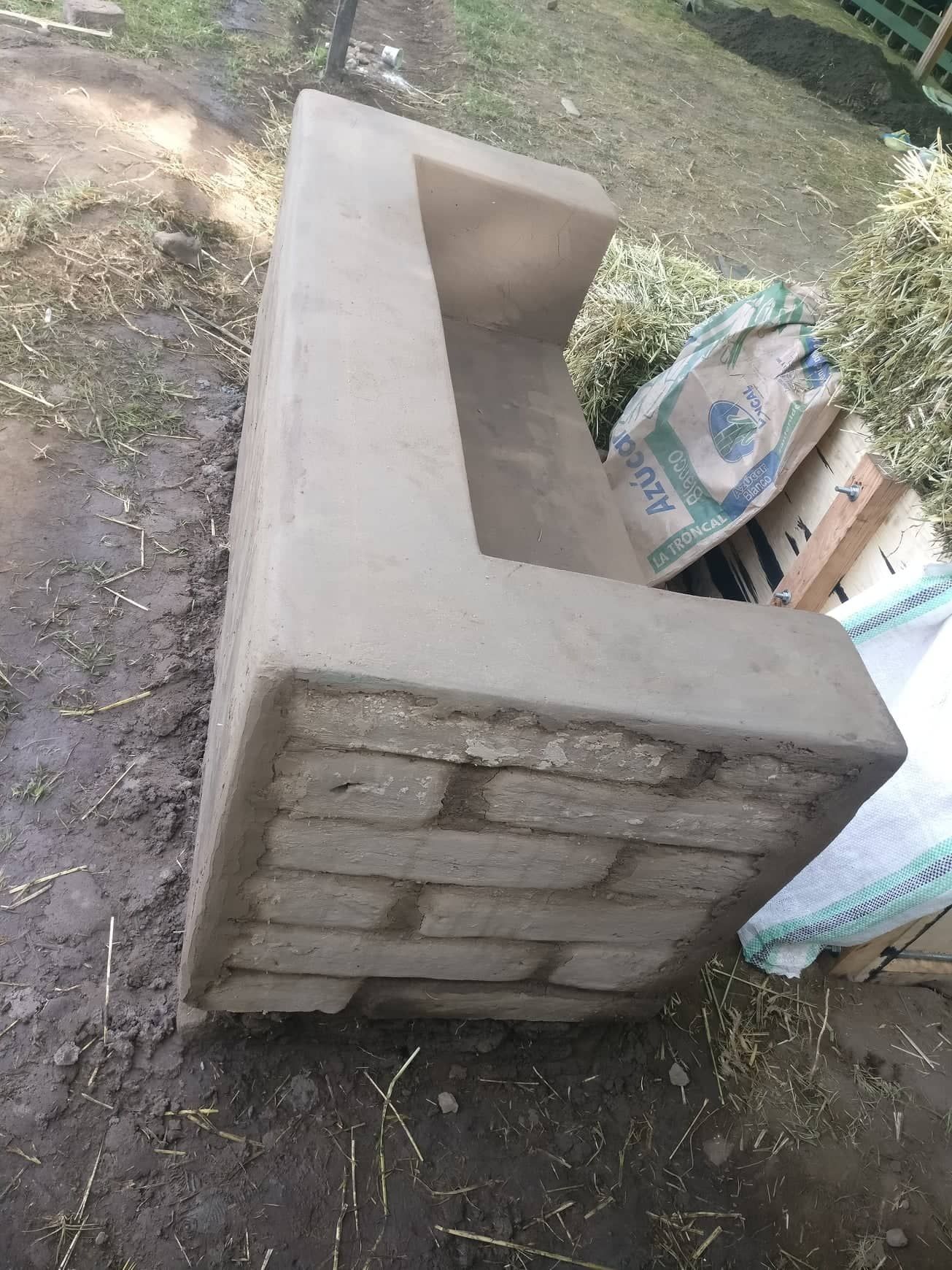

There you have three of the techniques that we tried during the week. 'Stuffed wall', 'Rammed earth', and 'Adobes'. Involved in all of those techniques was some kind of plastering.

What an amazing experience. I can’t thank Vicky enough for following through with that dream of hers. What I have taken away from the trip is much more than the experience of building with earth. I had a beautiful cultural experience by living with a local family. It was a small community, so I could walk back to the house for lunch, therefore I was eating three meals a day with them. You really get to know a family at the dinner table! It was also very interesting to see the difference between small village and big city in terms of availability of, and access to, fresh, healthy produce.
I learnt a lot about group dynamics from an educational perspective. Each time that we would come back from a break we would engage in ice breaker type activities to get us all functioning as a tight-knit unit! Our team motivator and translator, Borja from Spain, was the subtle glue that kept the team together! Ariel the biocontsruction expert who directed the practical and theoretical aspect of the training was very passive and hands-off in his approach, which allowed us to make mistakes and learn by doing (the best way to learn).
All in all, I had a phenomenal experience. Now it’s back to work with the kids of Monte Chingolo. The first bioconstruction project will be to put the finishing touches on our mud oven with a fine plaster coating. I also have a bench idea floating around in my head. Who knows what the next adventure of the bio-baker will be…
